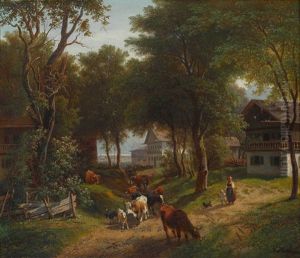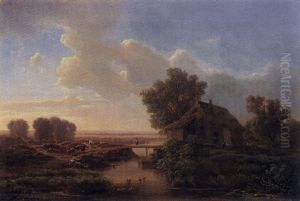Carl Hafner Paintings
Carl Hafner, born in 1860 and passing in 1944, was a notable figure in the realm of art, whose contributions spanned across various styles and mediums. His life, deeply entrenched in the transformative periods of the 19th and 20th centuries, was a reflection of the changing tides in art and society. Although not as widely recognized as some of his contemporaries, Hafner’s work offers a unique lens through which to view the evolution of European art during a time of significant social, political, and technological change.
Hafner's early life was marked by an intense passion for the arts, which was nurtured through comprehensive studies in several prestigious art institutions across Europe. This foundational period was crucial in developing his versatile style, which later became characterized by an adept blending of traditional techniques with emerging trends. Throughout his career, Hafner was known to experiment with various forms and mediums, including painting, printmaking, and illustration, which demonstrated his commitment to exploring the full spectrum of artistic expression.
During his lifetime, Carl Hafner's work was exhibited in numerous galleries and earned him a place among the respected artists of his time. His art was particularly noted for its detailed realism, a testament to his meticulous technique and keen observation. Despite the shifting artistic movements of the 20th century, Hafner maintained a commitment to capturing the essence of his subjects, whether they were landscapes, portraits, or scenes of daily life. His ability to imbue his works with emotional depth and a sense of immediacy helped to solidify his reputation among art aficionados and collectors.
After his death in 1944, Carl Hafner's contributions to the art world continued to be celebrated through posthumous exhibitions and retrospectives. Today, his works are preserved in various art museums and private collections, serving as enduring examples of his artistic legacy. Hafner’s life and art remain subjects of interest for art historians and enthusiasts, who value his dedication to artistic exploration and his ability to capture the beauty and complexity of the world around him.












